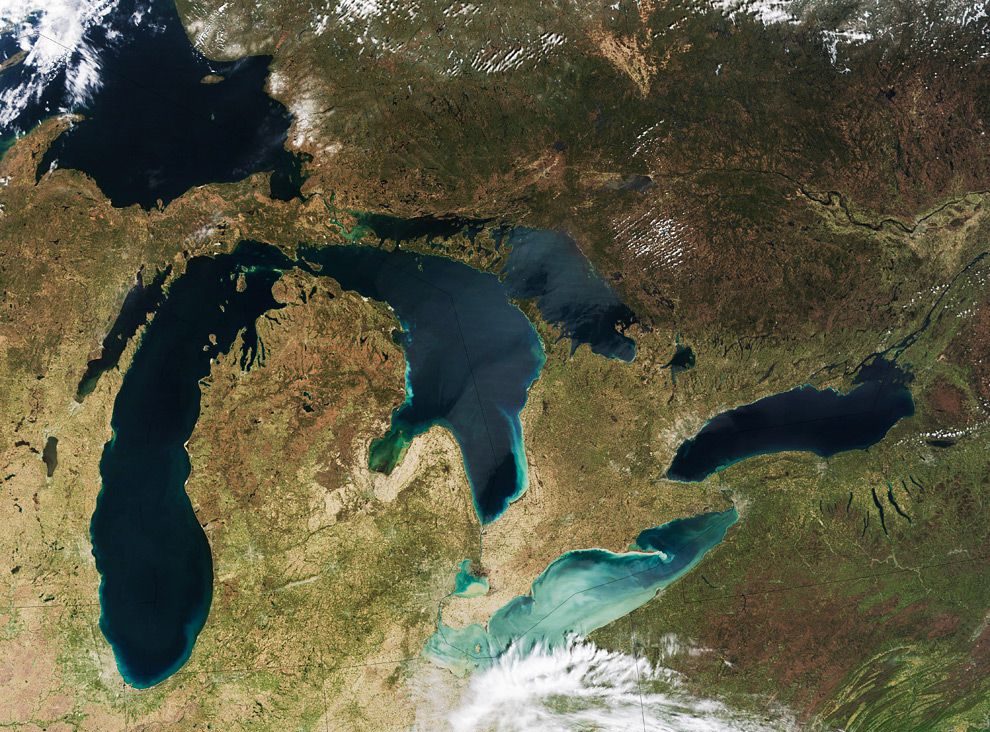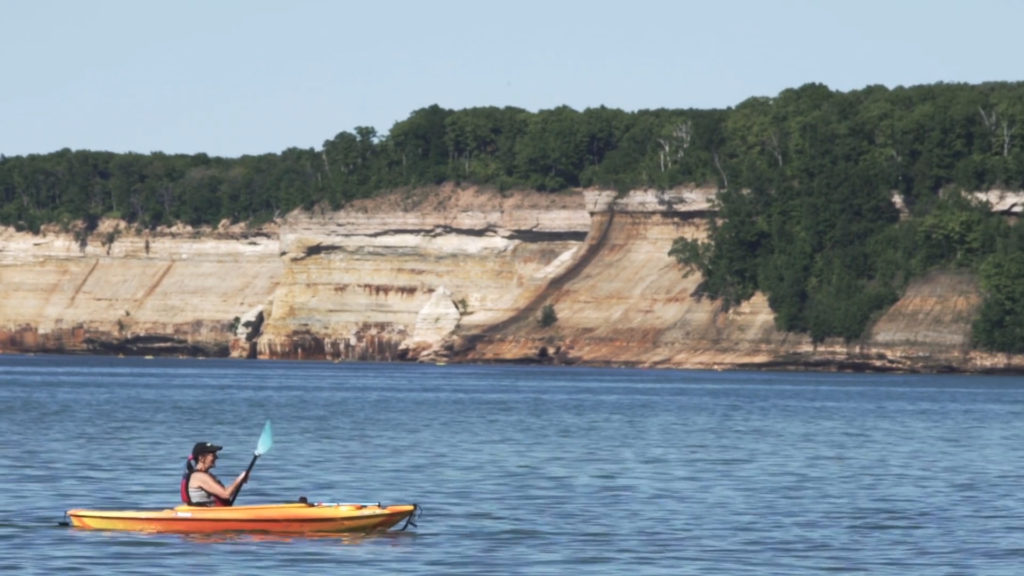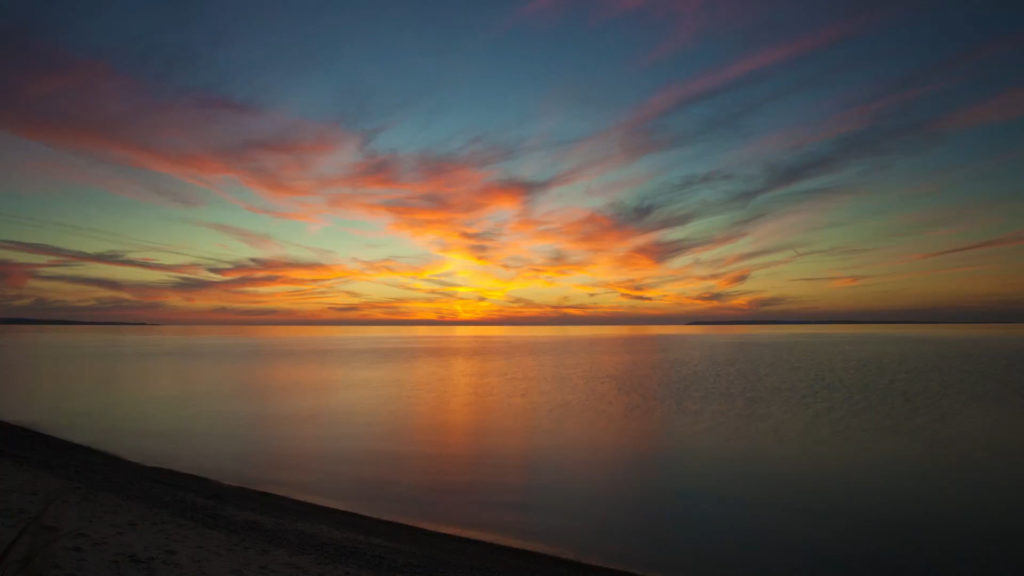There is an endless list of reasons why the Great Lakes deserve the world’s attention and protection. Their timeless beauty and diverse ecosystem contain stories that should be told for generations to come. Stone Hut Studios finds its home on Grand Traverse Bay in Lake Michigan, and our connection to the Great Lakes influences our work to increase people’s awareness of their importance for both humans and the environment.
We start with a factual overview of the importance of the Great Lakes, highlighting insightful information taken directly from NOAA, the National Wildlife Federation, and the US Fish & Wildlife Service. Then you will find an explanation of the threats to the Great Lakes followed by how Stone Hut Studios is involved in its protection and conservation.

What makes the Great Lakes so important?
“The Great Lakes includes five large lakes: […] Superior, Michigan, Huron, Erie, and Ontario. They hold about 90% of the freshwater in the United States and approximately 20% of the world’s freshwater supply (noaa.gov).”
It is not a small fact that the Great Lakes are the largest body of freshwater in the world. Their ecosystem alone supports “more than 3,500 species of plants and animals” that live in the lakes’ “aquatic, forest, marsh, wetland, and dune ecosystems (noaa.gov).” The variety of animals in the Great Lakes include a plethora of wildlife, fish, and migratory birds. Each lake is greatly different from the other, which attributes to the diversity of animals both underwater and on the shore. For example, “Lake Superior, the largest of the lakes, is cold and deep, [while] Lake Erie is one of the smallest of the Great Lakes and is relatively shallow and warm (nwf.org).”
The US Fish & Wildlife Service (FWS) focuses their research on the Great Lakes Basin, which hosts a diverse ecosystem of fish, including “lake trout, lake sturgeon, lake whitefish, walleye, landlocked Atlantic salmon, and associated forage fish species (fws.gov),” and other aquatic life. Other wildlife comes from land and air, including the expansive dunes. According to the FWS, the Great Lakes Basin, “provides critical breeding, feeding, and resting areas, as well as migration corridors” for migratory birds. The National Wildlife Foundation lists river otters, coyotes, moose, beavers, little brown bats, grey wolves, and more who call the Great Lakes home.
The scale of the Great Lakes is significant for all habitants, including humans utilizing this unique resource. According to NOAA, “forty million residents of the United States and Canada depend on this system for clean drinking water.” Additionally, the US Fish & Wildlife Service claims “more than 35 million people live in the Basin and depend upon its natural resources.” In addition to the natural benefits of the Great Lakes, humans profit economically from the “commercial and sport fishing, agriculture, recreation, tourism, manufacturing, and shipping (noaa.gov).” Overall, the main economic beneficiaries of the Great Lakes are fisherpeople, farmers, and shipping companies.

What threatens the Great Lakes?
NOAA appropriately explains that the Great Lakes ecosystem is threatened by “invasive species, climate change, pollution, and habitat destruction.” Many of these threats either originate or are advanced by humans. These unique bodies of water, formed during the last ice age 20,000 years ago, have kept their current, impressive formation for about 3,000 years (noaa.gov). What happens next to the Great Lakes is greatly determined by human conservation, intervention, and protection.
“Climate change affects water temperatures, weather patterns, and lake levels. Pollutants from residential, agricultural, and industrial areas reduce water quality. Land development decreases the amount of wildlife habitat. Fish populations have been declining in recent years as a result of these threats and increased fishing pressure (noaa.gov).”
The National Wildlife Foundation adds sulfide mining near Lake Superior to the list of potential threats. To expand on climate change, National Geographic highlights the importance of the Great Lakes freezing and its relation to climate change in this article. Furthermore, National Geographic has produced wonderful films about the Great Lakes, including Drain the Great Lakes, which is currently available on Disney+. Stone Hut Studios’ founder, Aaron Dennis, in collaboration with PBS, produced a documentary film, Beneath the Surface, “about the Enbridge-owned Line 5 Pipeline that carries gas and oil underwater between Michigan’s Upper and Lower Peninsula in the Straits of Mackinac (pbs.org).” This highlights the human interference and threat to our Great Lakes.

How is Stone Hut Studios involved?
As the home of our founder, director, and videographer, Aaron Dennis, Michigan and the Great Lakes compel much of Stone Hut Studios environmental and social focus. Stone Hut Studios has enjoyed working on various video projects centered around the Great Lakes. Aaron has been fortunate enough to film some of the Great Lakes while traveling with his father, Jerry Dennis, the author of The Living Great Lakes. This content was added to the Power of Nature video series when Stone Hut Studios teamed up with Heart of the Lakes and NOAA. This six part web series tells the stories of people whose lives are affected by the Great Lakes. With PBS, Aaron Dennis produced a TV documentary with a strong theme about protecting the Great Lakes called Beneath The Surface: The Line 5 Pipeline in The Great Lakes. In Northern Michigan, Stone Hut Studios has a wonderful relationship with the Grand Traverse Regional Land Conservancy that has allowed us to created several films, including a short documentary that celebrates the GTRLC’s 25 years of land and shoreline protection and a promotional video for the GTRLC’s Campaign for Generations to raise $71.4 million to support multiple important environmental projects.
Michigan and its Great Lakes are Stone Hut Studios’ community, and we aim to continue to produce meaningful Great Lakes films and videos. One of our dream projects will always be to use videography to the story of the Great Lakes, to promote awareness and gain the national and international esteem they deserve. Who knows, maybe in the next 5 years Stone Hut Studios can document all five lakes, from the Saint Lawrence seaway (or Erie Canal) and all the way to the ocean!



